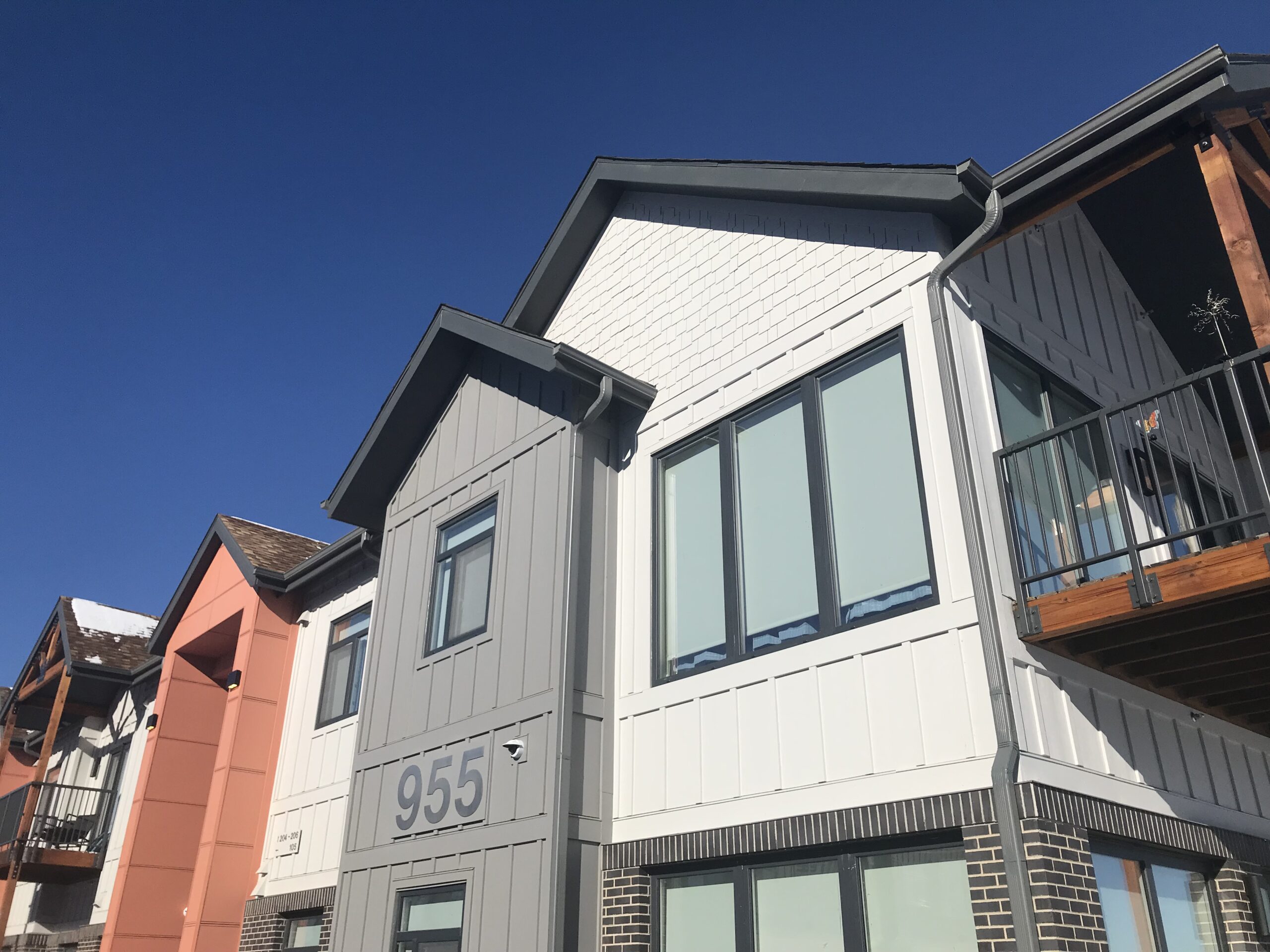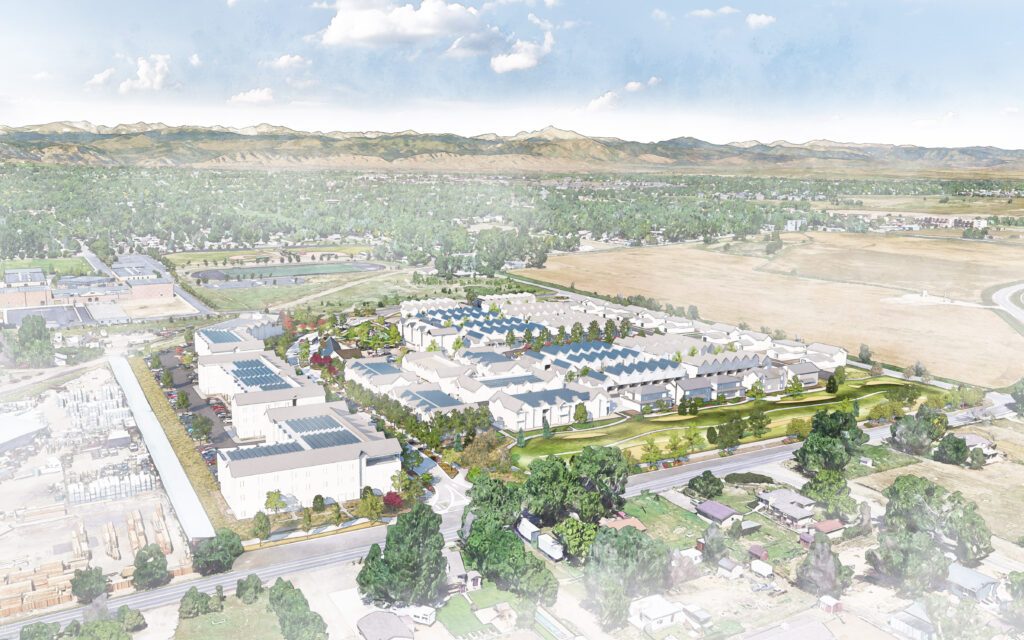
It’s been three months since the first tenants moved into Lafayette’s Willoughby Corner. The county’s newest affordable development offers one-, two- and three-bedroom units and boasts a community garden, dog park, playground, orchards, pickleball courts and easy access to bike trails.
All the units are below market-rate with utilities included and no pet fees.
But for a county with over 28,000 cost-burdened households — each spending more than a third of their income on rent — it might be surprising to learn that the Boulder County Housing Authority (BCHA) is still working to fill about half of the 192 affordable units, including 51 units that aren’t up for lease yet and will be available beginning this spring.
It’s still early, and BCHA’s director of operations Amanda Guthrie says she doesn’t have any doubt they’ll be leased by this summer, but the housing authority is trying to get the word out about the homes.
“I think sometimes people self-screen and maybe screen themselves out,” she said. “We don’t want people to do that. We want them to apply no matter what, and let us help with that.”
A tricky match
Guthrie says people often worry “they’re taking a spot away from someone who might need it more than them.”
In actuality, the units that are left can’t go to those with the highest level of financial need (in most cases, at least). That’s because Willoughby Corner and other affordable developments offer staggered pricing based on income; a certain number of apartments need to be leased at the higher rates in order for the building to stay financially afloat.

At Willoughby Corner, only 16 of the multifamily units and 14 of the units for adults 55 and older — about 15% percent of the total available apartments — can go to people with 30-40% of area median income (AMI). That’s about $30,700-40,900 for an individual or $43,800-58,400 for a family of four.
And Guthrie says those get snapped up quickly.
“It demonstrates the need that exists in the community for those lower area median rents and just how critical they are in terms of reaching people and serving the population,” she said.
The remaining units at Willoughby Corner can only go to those in the 60% AMI range.
In Boulder County, that’s $61,320 annual income for a household of one, $70,080 for a household of two, or $87,600 for a household of four. (The exception is for folks with housing choice vouchers, a U.S. Department of Housing and Urban Development (HUD) program that allows households to spend 30% of their income on rent with HUD covering the remainder — but waitlist times for the program are often five to 10 years, according to the county.)
“When you’re proposing an affordable housing deal, you need to get financing and get the tax credits … In that underwriting process, basically, they’re evaluating what low rents can be offered,” Guthrie said.
A one-bedroom unit in Willoughby Corner, for example, can range from $820 for someone with 30% AMI to $1640 for someone with 60% AMI.
“We’re trying to meet the needs of the community, but then we also need to make sure that we’re structuring the finances in a way that the property remains viable for the duration of the project.”
It’s a frustrating reality of financing affordable developments that can make for a tricky balancing act.
“Sometimes I think housing, leasing and connecting people with the right units is a little bit like hitting a shot from half court,” Jim Williams, a BCHA spokesperson, said. “It has to be really in just the right AMI range, and so sometimes that can be a bit of a challenge.”
Willoughby Corner isn’t alone in its vacancies — two developments in Longmont are in a similar boat.
The Spoke on Coffman has one-bedroom units the county is working to fill at 60% AMI. Casa de la Esperanza has three-bedroom units available; that development uses the USDA definition of low-income, which for Boulder is $72,350 for a one-person household and $82,700 for a two-person household.
Casa de la Esperanza was originally only open to households with agricultural workers as their head, but as Longmont’s landscape has shifted “BCHA has found it difficult to fill vacancies,” Guthrie said. As a result, through a USDA waiver granted last year, units at Casa de la Esperanza are now open to other households too, though ag workers are still prioritized.
‘Visions of public housing’
The initial pre-application form is a “pretty quick and easy, low-risk way” to find out if you qualify for any of the available units at Willoughby Corner or elsewhere.
“You don’t have to do a bunch of paperwork to get that initial phone call,” she said. “There’s just a handful of questions. That early tech commitment is minimal.”
Guthrie and Williams suspect a stigma associated with affordable housing might be holding folks back from applying. But the stigma, they say, isn’t the reality.
“Some folks may have visions of public housing, and in Boulder County, those just don’t apply,” Williams said. “Boulder County Housing Authority’s affordable housing is literally some of the best-looking homes you’ll see in a community.”
Williams sees affordable developments as a key part of keeping Boulder County’s communities strong.
“It’s teachers, it’s firefighters, it’s the person who brings your food to you in the restaurant you love to go to, it’s the coffee shop that you go to.
“We’re losing housing affordability every day as housing prices continue to go up and stay up,” he said. “We see our role as an affordable housing provider is central there, and all of our partners that provide affordable housing, in offsetting what is really just getting more and more challenging for the people who are trying to live in this community and serve this community.”
